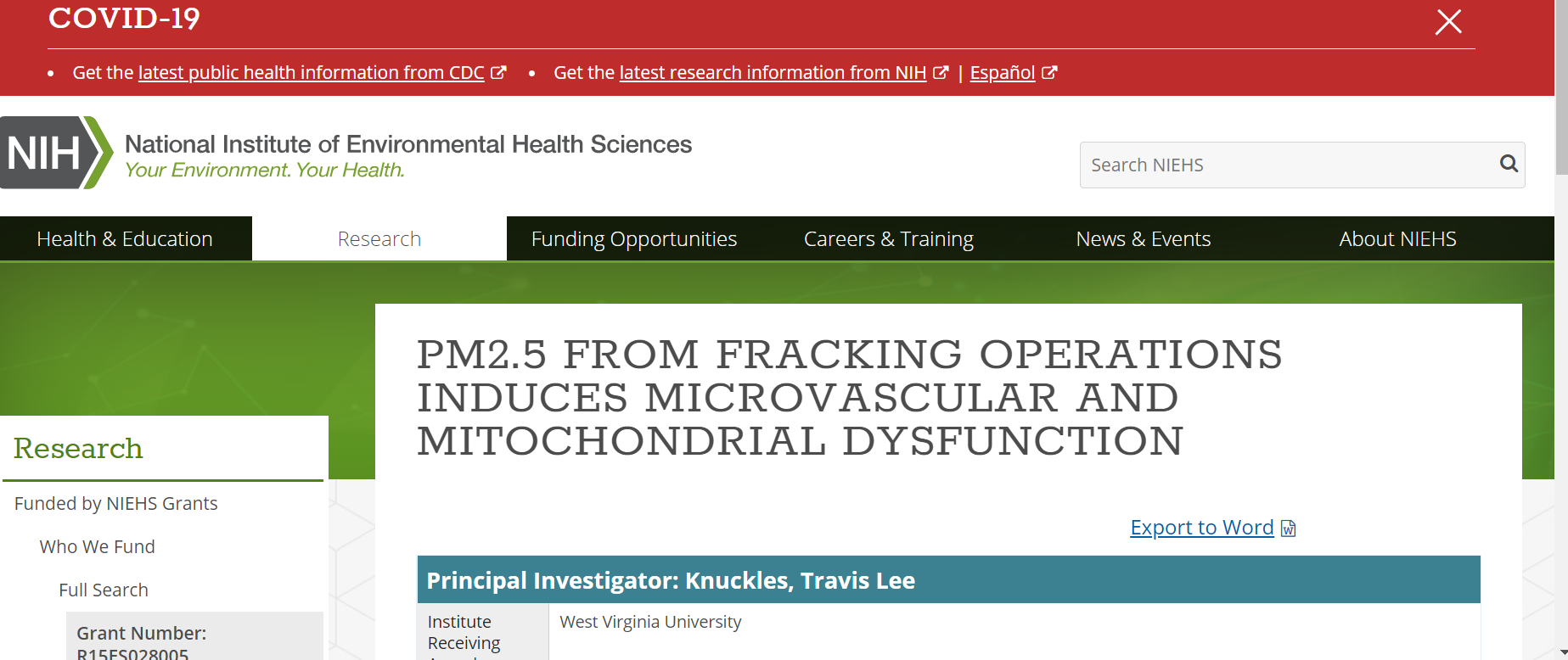The production of shale gas, and the development of wells using horizontal drilling and hydraulic fracturing technology, is a major driver of the U.S. economy. The process of preparing well pads for completion of the work creates a complex mixture of airborne toxicants that includes elevated concentrations of particulate matter (PM), ultrafine particles (UFPs) from diesel engine exhaust (DEE), silica, as well as volatile organic compounds (VOCs) and polyaromatic hydrocarbons from the geological, surface and anthropogenic sources. The to- quality of materials that the individuals are exposed to is alarming to federal, state, and local governmental organizations. Indeed, communities that are proximal to unconventional natural gas development (UNGD) well sites have greater health effects compared to communities without UNGD. However, what is not known is how ac- tive UNGD precipitates these health effects. PM, specifically fine PM (<2.5 µm in diameter, PM2.5) is a known cardiovascular toxicant. Several studies have demonstrated significant impairment in vascular, and microvascular function. Combined, these studies indicate significant cardiovascular health effects even at low ambient levels. Moreover, we have shown cardiac mitochondrial impairment, a significant contributor to the progression of heart failure, following ambient PM exposure. However, what is not known is the relative toxicity of specific sources (source apportionment) or the mechanisms of cardiovascular injury following pulmonary PM2.5 exposure. The long-term goal is to establish physiologic mechanisms that explain the epidemiological health patterns during UNGD. The objective of this R15 application is to substantially advance the scientific understand- ing of the mechanisms that link pulmonary UNGD PM2.5 to remote tissue dysfunction. The central hypothesis is that pulmonary exposure to PM2.5 collected on-site during hydraulic fracturing will have greater microvascular and mitochondrial dysfunction, characterized by disturbances in mechanisms supporting normal arteriolar constriction, endothelium-dependent dilation, mitochondrial function, and pro-apoptotic protein expression leading to cardiac functional declines. This hypothesis will be tested by 1) identifying the mechanistic alterations in microvascular and mitochondrial function during different stages of UNGD, 2) identifying the cardiac functional declines that result from microvascular and mitochondrial dysfunction. The rationale for this work is that pro- posed research will add substantially to the mechanistic insights of PM2.5-induced microvascular and mitochondrial dysfunction while supporting our mission to educate and prepare students. Utilizing students to test these aims will allow the students to gain knowledge in microscopy, necropsy, anatomy, biochemistry, and microvascular and cardiovascular physiology. The research proposed is innovative because it directly determines the toxicity of the complete matrix of toxicants produced during three phases of UNGD. The proposed research is significant as it will assess cardiovascular toxicity during different phases of drilling as well as mechanisms of dysfunction that will bridge the gap between basic science and epidemiological UNGD health effects. The proposed research is relevant to public health because current knowledge is lacking about the cardiovascular health effects of particulate matter from hydraulic fracturing. Thus, the proposed research is relevant to the part of the NIH’s mission that pertains to understanding the effects of environmental contaminants.

